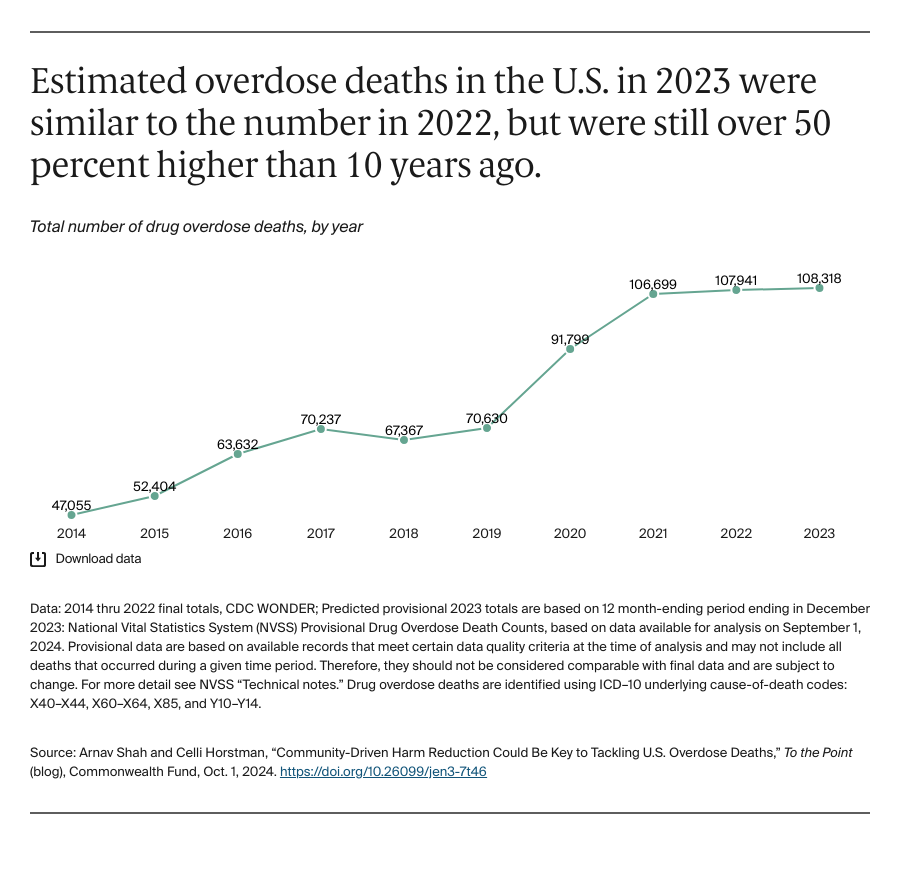After many decades of largely abstinence-based efforts to curb substance use in the United States, harm reduction has become a central tenet of the nation’s strategy for reducing overdoses.
Harm-reduction programs focus on reducing the risk and stigma associated with drug use through prevention, treatment, recovery, and health promotion. They ensure people who use drugs have access to education and treatment that is not contingent on abstinence, which may be a goal of treatment but can also be a barrier to care and progress. Strategies can include safe supply distributions, like syringe-exchange programs; the distribution of naloxone, which can reverse opioid overdose; drug-checking tools like fentanyl test strips; and community overdose education and training.
These programs are particularly effective when led by community members and leaders, advocates, and local organizations because they reflect the values, resources, and needs of the community. The Bad River Band of Lake Superior Chippewa’s harm-reduction program is grounded in the community’s needs and traditions, emphasizing storytelling, for example, and prioritizing anonymity. It has successfully reversed hundreds of overdoses and now serves counties surrounding the tribal land. In Lucas County, Ohio, harm reduction, including overdose prevention training and community outreach, led to a 20 percent decrease in overdose death rates between 2020 and 2022. Not only have harm-reduction programs been proven to reduce mortality and improve access to treatment and care, there is no evidence that harm-reduction programs prolong substance use — a common critique.
Trends in Overdose Deaths
This growth of harm-reduction policies is taking place in the context of an unprecedented rise in opioid overdose deaths in the U.S. One key driver of this upswing is the growth of synthetic opioids, which increase the risk of overdose and death because of their potency. As documented in previous analyses by the Commonwealth Fund, synthetic opioids other than methadone, including both pharmaceutical and illegally made fentanyl, continue to be a major driver of overdose deaths across the U.S. Between 2013 and 2022, synthetic opioids went from being responsible for a minority of overdose deaths to a majority of deaths in 41 states and D.C.
Trends in overdose deaths nationally, which we have drawn from recent federal mortality data, offer clues on the possible impact of harm-reduction efforts in the U.S. Overdose deaths remain high — a record 107,941 people died from drug overdoses in 2022 — but the number of deaths has largely plateaued between 2021 and 2023. Provisional data suggest overdose deaths were at a similarly high level at the end of 2023, but appear to be leveling off and then potentially falling in the early part of 2024. While these data are incomplete and subject to change, considering the record levels of overdose deaths in the U.S. in recent years, this could be cause for optimism.






